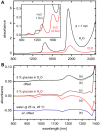Noninvasive Monitoring of Blood Glucose Using Color-Coded Photoplethysmographic Images of the Illuminated Fingertip Within the Visible and Near-Infrared Range: Opportunities and Questions
- PMID: 30222001
- PMCID: PMC6232738
- DOI: 10.1177/1932296818798347
Noninvasive Monitoring of Blood Glucose Using Color-Coded Photoplethysmographic Images of the Illuminated Fingertip Within the Visible and Near-Infrared Range: Opportunities and Questions
Abstract
Noninvasive blood glucose assays have been promised for many years and various molecular spectroscopy-based methods of skin are candidates for achieving this goal. Due to the small spectral signatures of the glucose used for direct physical detection, moreover hidden among a largely variable background, broad spectral intervals are usually required to provide the mandatory analytical selectivity, but no such device has so far reached the accuracy that is required for self-monitoring of blood glucose (SMBG). A recently presented device as described in this journal, based on photoplethysmographic fingertip images for measuring glucose in a nonspecific indirect manner, is especially evaluated for providing reliable blood glucose concentration predictions.
Keywords: color sensing; noninvasive glucose sensing; plethysmographic skin imaging; skin tissue spectroscopy; visible/near-infrared spectroscopy.
Conflict of interest statement
Figures




References
-
- Hönes J, Müller P, Surridge N. The technology behind glucose meters: test strips. Diabetes Technol Ther. 2008;10(S1). doi:10.1089/dia.2008.0005. - DOI
-
- Freckmann G, Baumstark A, Schmid C, Pleus S, Link M, Haug C. Evaluation of 12 blood glucose monitoring systems for self-testing: system accuracy and measurement reproducibility. Diabetes Technol Ther. 2014;16(2):113-122. - PubMed
-
- Corabian P, Chojecki D. IHE Report: Exploratory Brief on Glucose Monitoring Technologies. Edmonton, AB: Institute of Health Economics; 2017. Available at: https://www.ihe.ca/publications/exploratory-brief-on-glucose-monitoring-.... - PubMed
Publication types
MeSH terms
Substances
LinkOut - more resources
Full Text Sources
Other Literature Sources
Medical

